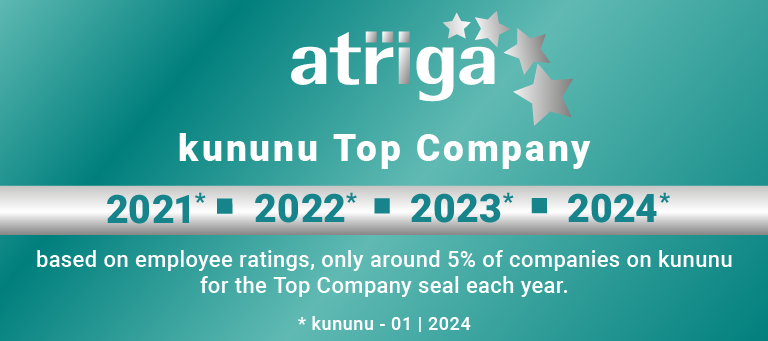„Innovations optimize your receivables management. Subscribe to the atriga newsletter and be the first to know!“
Innovation out of tradition
atriga Endless Collection: The end of static dunning processes (1/2)
In receivables management, the question regularly arises of how to deal with undischarged receivables that have no chance of being settled in the short or medium term from a business point of view. The options are limited: Write-offs or the sale of receivables are often the options that are chosen before investing additional money in legal measures. For many years already, atriga has been proving that there is another way thanks to atriga Endless Collection. A far advanced digitalisation makes it possible to maintain the communication with the defaulting customer for years and thus to break through the still usual, static process. And this can be done without large personnel expenses and highly efficiently through an automated and systemically controllable communication. As a result, atriga achieves an increase in the payer rate of an additional five to seven percentage points in the medium and long term.
Avoid escalation through individual control
Even at the end of a dunning process, the defaulting customer still does not have sufficient financial means to settle the due debt. Therefore, they “duck” away and try to avoid contact and confrontation with creditors. In this situation, neither artificial intelligence (AI), nor machine learning (ML) or scoring can help to persuade the customer to pay. On the creditor side, this initial situation raises the strategic question of whether an escalatory approach can be reconciled with a customer-centric orientation or a strategy that makes sense from a business perspective.
Steffen Himer, Head of Legal Services & Debt Collection at atriga: “For the first time, atriga Endless Collection allows a permanent view and adjustment of the dunning processes through the highly personalised and individually tailored Customer Communication Journey for each defaulting customer”.

atriga Endless Collection concludes the schematic procedure
The dunning processes specified in the legacy systems are mostly statically structured and in many cases are only extended by an external service provider for receivables management and collection, which, however, cannot deviate from the standard procedure: After the occurrence of a payment disruption, the systematic, commercial dunning procedure follows with two to three reminders by post, after which the process is transferred to debt collection in order to titrate and secure the claim. This entails additional effort and costs for dunning notices and enforcement orders, and in the last step bailiffs and seizure. The legislator gives creditors at least three years for debts within the regular statute of limitations before the defaulting customer is threatened with a plea of limitation according to § 214 of the German Civil Code (BGB). For the first time, atriga Endless Collection breaks with this schematic approach and allows for a permanent observation and adjustment of the reminder processes through the highly personalised and individually tailored Customer Communicati-on Journey.
Read in part 2 why patience pays off and success is achieved even without disrupting the customer relationship.




